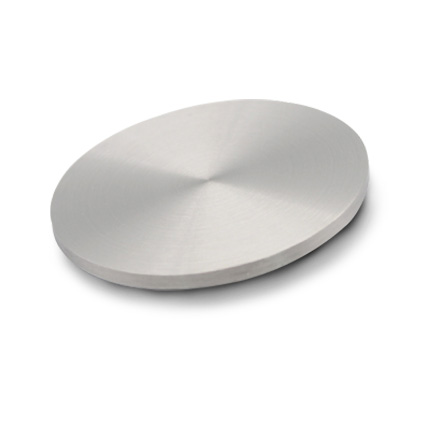The requirements of sputtering target materials are higher than those of traditional materials industry, such as size, flatness, purity, impurity content, density, N/O/C/S, grain size and defect control; higher requirements or special requirements include: surface roughness, resistance value, grain size uniformity, composition and structure uniformity, foreign body (oxidation). Content and size, permeability, ultra-high density and ultra-fine grains, etc. Magnetron sputtering is a new kind of physical vapor deposition method, which uses electron gun system to emit and focus electrons on the plated material, so that the sputtered atoms follow the principle of momentum conversion and fly away from the material to the substrate to deposit films with high kinetic energy. This plated material is called sputtering target. Sputtering targets include metals, alloys, oxides and other compounds.
An orthogonal magnetic field and electric field are added between the sputtered target (cathode) and the anode, and the required inert gas (usually Ar) is filled into the high vacuum chamber. The permanent magnet forms a 250-350 Gaussian magnetic field on the surface of the target material, which forms an orthogonal electromagnetic field with the high voltage electric field. Under the action of electric field, Ar gas ionizes into positive ions and electrons, and a certain negative high pressure is added to the target. The electrons emitted from the target pole are increased by the action of magnetic field and the ionization probability of working gas. A high density plasma is formed near the cathode. Under the action of Lorentz force, Ar ion accelerates to the target surface and bombards at a high speed. By hitting the target surface, the sputtered atoms on the target follow the principle of momentum conversion and fly away from the target surface with higher kinetic energy to deposit films on the substrate. Magnetron sputtering is generally divided into two kinds: direct current sputtering and radio frequency sputtering. The principle of direct current sputtering equipment is simple, and the rate of sputtering metal is fast. Radio frequency sputtering has a wider range of applications. Besides sputtering conductive materials, it can also sputter non-conductive materials. At the same time, reactive sputtering can be used to prepare oxides, nitrides and carbides. If the frequency of radio frequency increases, it will become microwave plasma sputtering. Nowadays, electron cyclotron resonance (ECR) microwave plasma sputtering is commonly used.
Wave plasma sputtering.

